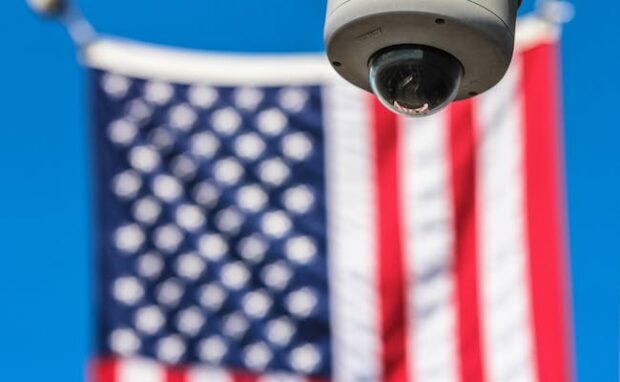AI executive order is the US’ strongest global response to artificial intelligence
On October 30, 2023, US President Joe Biden signed a new AI executive order. It is the government’s response to the growing influence of artificial intelligence. The White House Deputy Chief of Staff said it is “the strongest set of actions any government in the world has ever taken on AI safety, security, and trust.”
It may seem weird to focus on the United State’s new AI law if you’re outside the country. However, the White House press release said it worked with several nations, like the Philippines, to make this law. Soon, you may face a version of these regulations, so you should learn more about them.
This article will talk about the United States AI executive order. I will list its actions one by one and share insights from various experts regarding this issue.
The 8 goals of the AI executive order:
- New AI safety standards
- Protecting Americans’ privacy
- Advancing Equity and Civil Rights
- Consumer and student protections
- Worker support
- Promoting innovation and cooperation
- Advancing US leadership worldwide
- Ensure responsible AI use
1. New AI safety standards

The executive order prioritizes AI safety. Hence, it lists standards at the top of the list. It requires AI developers to share safety test results with the US Government.
In accordance with the Defense Production Act, they must notify the federal government when creating foundation models that may compromise national security. As a result, it will ensure AI systems are safe and secure before their public launch.
The National Institute of Standards and Technology will create rules for extensive red-team testing to ensure safety further. Red teams are IT experts who simulate enemy hacks to verify a computer system can fight against real-life threats.
You may also like: US Copyright Office asks public opinion on AI
The Department of Commerce will develop guidance for content authentication and watermarking to label AI-generated content clearly. As a result, Americans can confirm government communications are authentic.
The National Security Council and White House Chief of Staff will develop a National Security Memorandum for AI security. They will help the US military counter adversaries using this technology.
Lastly, it will protect against the use of AI in creating biological materials. Believe it or not, some experts can use DNA data to produce bioweapons.
2. Protecting Americans’ privacy

The AI executive order will protect privacy by prioritizing federal support for developing privacy-preserving techniques. It acknowledges we don’t have foolproof online privacy tools, so it will help others build them.
The new law will also develop guidelines for federal agencies to evaluate the effectiveness of these methods. In turn, these guidelines will advance efforts to protect US citizen data.
The order will evaluate how agencies collect and use online information, including personally identifiable data. Moreover, it will strengthen privacy guidance for federal agencies to consider AI risks.
3. Advancing Equity and Civil Rights

Biden’s new law says, “Irresponsible use of AI can lead to and deepen discrimination, bias, and other abuses in justice, healthcare, and housing.” That is why the administration published an AI Bill of Rights while aiding existing authorities to protect human rights.
The AI executive order will provide clear guidance to Federal benefits programs, federal contractors, and landlords. It will ensure they cannot use AI algorithms to worsen discrimination.
It will address algorithmic discrimination via training, coordination, and technical assistance between the Federal civil rights offices and the Department of Justice. They will create the best practices for investigating and prosecuting civil rights violations related to AI.
4. Consumer and student protections

The AI executive order understands how artificial intelligence can benefit consumers. For example, it can facilitate making products and services.
However, it knows it can mislead and harm people. That is why it champions the responsible use of AI in healthcare. The Department of Health and Human Services will also establish a safety program to receive reports on unsafe healthcare practices involving AI.
As a result, it could remedy such issues. Moreover, the executive order will shape AI’s impact on education. It will help create resources to support educators using AI-enabled tools.
5. Worker support

Many have worried about artificial intelligence taking away people’s jobs since ChatGPT became popular. That is why the executive order will mitigate these risks by helping workers.
It will encourage developing principles to mitigate the harms and maximize the benefits of AI. As a result, it could prevent employers from under-compensating workers, impinging on workers’ right to unionize, and evaluating job applications unfairly.
The AI executive order will study and identify options for strengthening federal support for workers facing labor disruptions from AI. Also, it will produce a report on AI’s potential labor-market effects.
6. Promoting innovation and cooperation

The United States is the leader in AI innovation worldwide at the time of writing. That is why the executive order wants the country to continue leading AI development.
It will create the National AI Research Resource to give researchers and students access to essential AI resources. Also, it will expand grants for AI research for crucial sectors like climate change and healthcare.
The law will use existing authorities to help highly skilled immigrants and nonimmigrants to study, stay, and work in the US. It aims to achieve this goal by streamlining and modernizing interviews, reviews, and criteria.
7. Advancing US leadership worldwide

As mentioned, other countries may soon adopt rules similar to the United States AI executive order. That is because it aims to work with other nations to ensure global AI safety.
It will expand bilateral, multilateral, and multistakeholder engagements to collaborate on AI. Moreover, it will boost the development and implementation of essential AI standards with international partners.
That will ensure the technology is safe, trustworthy, and interoperable with people around the world. Moreover, it will use AI to solve global challenges, such as mitigating dangers to critical infrastructure.
8. Ensure responsible AI use
Artificial intelligence can greatly improve government services. For example, it can facilitate the disbursement of benefits and secure government systems.
The executive order will ensure effective and responsible government use of AI. It will issue guidelines to protect rights and safety, reinforce AI deployment, and enhance AI procurement.
You may also like: Your next CEO could be an AI robot
Moreover, it will help agencies acquire specified AI products and services more affordably, effectively, and quickly. The law would also accelerate the rapid hiring of AI professionals.
Conclusion
The United States issued the most powerful global action for AI benefits and risks. Its new executive order ensures everyone worldwide can use the technology to improve their lives.
You may not live in the US, but you will probably see similar regulations in your country. Prepare by learning more about these guidelines.
Gain more information on President Biden’s new executive order by reading the official White House webpage. Learn more about the latest digital tips and trends at Inquirer Tech.
Frequently asked questions about AI
What are the AI laws in other countries?
The United States is one of many countries preparing for widespread AI adoption. For example, the Philippines proposed an AI bill in March 2023. The law recommends the creation of an Artificial Intelligence Development Authority. AIDA would serve as a “watchdog” to guard against people who may take advantage of AI for criminal means.
What are the benefits of AI?
Artificial intelligence can significantly enhance productivity by performing repetitive tasks. In turn, people may focus on more important activities that require human intervention. Also, it could facilitate the creation of products and services. For example, some companies use it to make antibodies in months instead of years.
What are the risks of AI?
Many people fear artificial intelligence could take over their livelihoods. After all, it has proven that it can perform many jobs typically requiring human skill. Yet, many experts see that AI leads to more jobs for people instead. As more companies use AI, they need more people to verify its results.